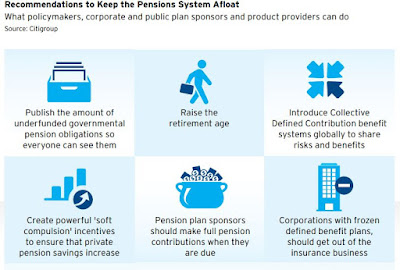1. An ADB study tries to estimate the impact of a slowdown in China on global commodity prices. The impact varies across commodities and there is apprently more to the decline in commodity prices than China.
2. The major argument supporting the wide pay disparity across occupations revolves around a "skill premium" in sectors like finance and law. A Brookings paper by Jonathan Rothwell points to a paper by John Abowd and four others which examined administrative records of millions of Americans from the 1990-2011 period and finds high levels of "rents" or "gratuitous pay" - pay in excess of skills - in these sectors. They find that people working in finance and law earn 26% and 23% more, regardless of skill, whereas those in eating and drinking establishments earn 40% below their skill level.
What's more, Rothwell finds that the rents have increased dramatically in certain industries in the 1980-2013 period, with that for workers in securities and investment industry rising from 41% to 60%, legal services from 27% to 37%, and hospitals from 21% to 39%, while those in eating and drinking establishments stayed stagnant at about minus 20%.
Rothwell finds that income from financial market investments like hedge funds and large entry barriers (pervasive among lawyers, doctors, and dentists, the three highest represented occupation groups among the top 1 per cent) are far bigger contributors to widening inequality than increasing share of capital income, technology, and superior skills.
3. Illuminating Citi report on the pension fund financing deficit facing the world economy. It estimates that "the total value of unfunded or underfunded government pension liabilities for 20 OECD countries is a staggering $78 trillion, or almost double the $44 trillion publicshed national debt number". The demographic shifts expected across the world are immense.
And the recommendations,
4. Fascinating graphic that captures the dominant revealed preferences of the counties that provide the biggest support base for Donald Trump.
5. The denser the area, less happy people are. But people still prefer to live in denser areas!
It is called the "urban-rural happiness gradient".
6. City Lab points to a fascinating study that captures the sounds (yes!) of localities in a very innovative and stunning visualization. A team of map, social science, data science, and acoustic researchers used public Flickr photos, their geo-location, tagged the photos with sound-related words, categorized the words into six categories (transport, nature, human, music, mechanical, and indoor sounds), and finally mapped the correlation between each category and the emotion it evokes! The maps are available for 12 cities across the world.
6. City Lab points to a fascinating study that captures the sounds (yes!) of localities in a very innovative and stunning visualization. A team of map, social science, data science, and acoustic researchers used public Flickr photos, their geo-location, tagged the photos with sound-related words, categorized the words into six categories (transport, nature, human, music, mechanical, and indoor sounds), and finally mapped the correlation between each category and the emotion it evokes! The maps are available for 12 cities across the world.







No comments:
Post a Comment